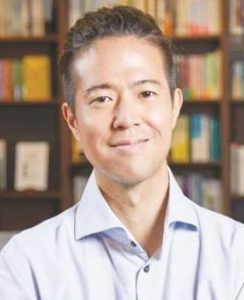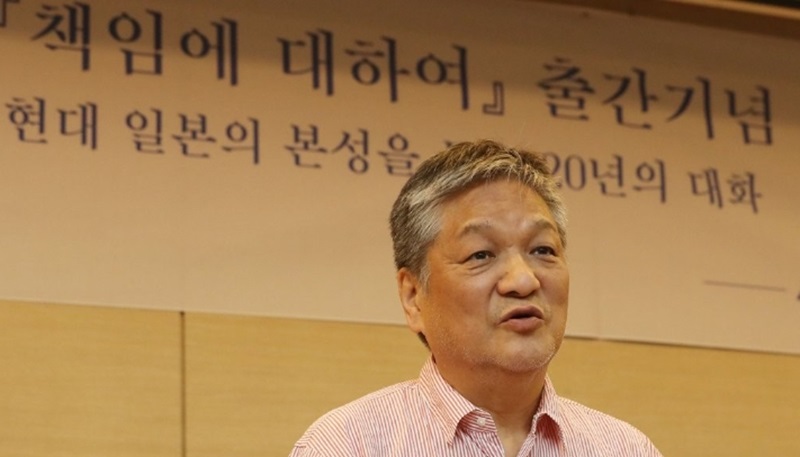
By Joseph Juhn
The author is a documentary filmmaker of “Jeronimo” and “Chosen”.
[Diasporic Perspective]
There are moments when news of someone’s passing, someone I never had the chance to meet in person, stirs unexpected grief. While the deaths of familiar figures such as celebrities or political leaders can also evoke such sadness, the death of writers whose book fundamentally shaped the way we see the world, or the demise of mentors we secretly admired, can result in a deep sense of loss.
I felt this way when I heard about the passing of Professor Kyong-sik So, a second-generation Korean Japanese known as a “diaspora intellectual.” He passed away at the age of 72 on December 18th, two months ago, at his home in Japan. Through several books such as “Diaspora Journey,” “Between Refugees and Citizens,” and “Witness of History: Korean Japanese in Japan,” he explored his own identity, the identity of Korean Japanese in Japan, and furthermore, the existence of marginalized individuals.
Examining Professor So’s life, born in Kyoto, Japan, during the Korean War in 1951, one can gauge why he grappled with such concerns throughout his life. His life, in addition to being shaped by discrimination and oppression as a Korean Japanese in Japan, was also marked by the toxic division of his homeland.
When So was still a young student in Japan, two of his older brothers who were studying at Soul National University became entangled in the so-called “Korean Japanese Student Spy Incident,” and were arrested for violating the National Security Law. The divided Korean Peninsula was not kind to Korean Japanese even if they held South Korean passports.
Subsequently, he led two movements, one to free his brothers, and another to democratize South Korea, which was still under military dictatorship. During this time, both of his parents passed away and the brothers were released after nearly 20 years.
No wonder Professor So was fixated on ‘death’. A phrase from his book “Diaspora Journey” is telling: “Where and how will I die? That always weighs on my mind.” Every time he traveled, one of the essential itineraries included the graves of artists and philosophers of that region. To him, each grave, which others might casually pass by, was not the same.

While most graves reflected elements of traditional forms, religious rituals, cultural heritage, and family histories, the graves without clear origins or tombstones he took a particular liking, and called, ‘Diasporic Tombs’. It was perhaps inevitable that he turned to fellow intellectuals with a similar diasporic background for wisdom.
He often quoted Primo Levi and Edward Said. Levi was an Italian Jewish writer who survived the Holocaust in Auschwitz, and Said, a Palestinian American scholar who advocated for Palestinian independence. Both Levi and Said did not use their diasporic experiences as tools of self-pity or as weapons against others but the fate would have it that they would see in their lifetime where one diasporic group would beget another diasporic group by force. The shared experiences of dispersion and marginalization, after all, did little to bring harmony between the two groups: a cruel and ironic reminder that in history, the roles of victim and oppressor can always interchange.
Professor So believed that the power to break such colonial and nationalist violence is possible through diasporic consciousness. ‘Consciously standing in the position of the discriminated,’ another famous line in “Diaspora Journey”, he was already a discriminated member, yet he voluntarily assumed the position again. This was to transform his own memories of discrimination and rejection into a universal perspective and a call for recognizing other minorities, the weak, and diasporas: Who am I? Who are you? Why should we care about the marginalized? Why should we change the world?
In one of his final lectures known to the public, he reminded the audience that his spiritual mentor, Levi, was someone who had paid a “high price” – that is, surviving the concentration camp – to deliver the message of human liberation. Professor So, too, paid a “high price” by colliding head-on with the tragic twists and turns of modern Korean history, leaving us with the legacy of diasporic consciousness. The discourse on humanity, life, and hope by those who came closest to death therefore carries profound weight.
I always wanted to meet Professor So in person. Now that he’s no longer with us, I hope to someday pay a visit to his tomb, the ‘diasporic tomb’.

![Asian Voters’ Support for Trump Rose to 40%, Pew Survey Shows U.S. President Donald Trump delivers an address to the nation accompanied by U.S. Vice President JD Vance, U.S. Secretary of State Marco Rubio and U.S. Defense Secretary Pete Hegseth, at the White House in Washington, D.C., U.S. June 21, 2025. [REUTERS]](https://www.koreadailyus.com/wp-content/uploads/2025/06/0626-Trump-100x70.jpg)


![Korean Woman Deported After Using Altered Passport Name Old and new Korean passport [JoongAng Photo]](https://www.koreadailyus.com/wp-content/uploads/2025/06/0630-passport-100x70.jpg)